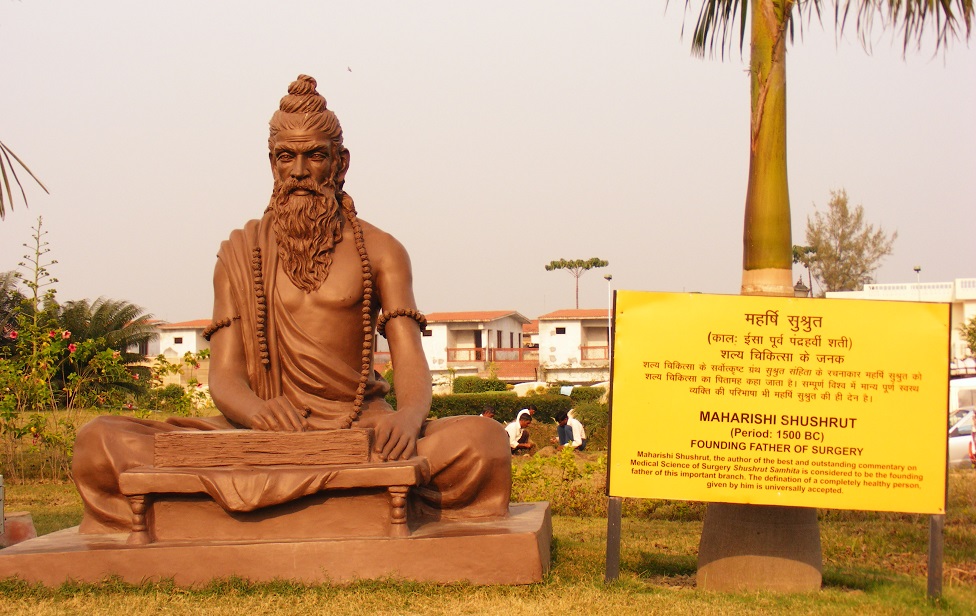Maharshi Sushruta (600 BCE) : Father of Plastic Surgery
A genius who has been glowingly recognized in the annals of medical science. Born to sage Vishwamitra, Acharya Sushrut details the first ever surgery procedures in “Sushrut Samhita,” a unique encyclopedia of surgery. He is venerated as the father of plastic surgery and the science of anesthesia.

When surgery was in its infancy in Europe, Sushrut was performing Rhinoplasty (restoration of a damaged nose) and other challenging operations. In the “Sushrut Samhita,” he prescribes treatment for twelve types of fractures and six types of dislocations. His details on human embryology are simply amazing.
About Sushruta, Father of Surgery
Suśruta (सुश्रुत (sʊʃɾʊt̪), was an ancient Indian surgeon and is the author of the book Suśruta Saṃhitā, in which he describes over 300 surgical procedures, 120 surgical instruments and classifies human surgery in eight categories. He lived, taught and practiced his art on the banks of the Ganges in the area that corresponds to the present day city of Varanasi in North India.
Because of his seminal and numerous contributions to the science and art of surgery he is known by the title “Father of Surgery.” Much of what is known about this inventive surgeon is contained in a series of volumes he authored, which are collectively known as the Sushruta Samhita.
Biography
Sushruta was educated and worked in Varanasi.
Contributions
There are numerous contributions made by Sushruta to the field of surgery. Surgical demonstration of techniques of making incisions, probing, extraction of foreign bodies, alkali and thermal cauterization, tooth extraction, excisions, trocars for draining abscess draining hydrocele and ascitic fluid. Described removal of the prostate gland, urethral stricture dilatation, vesiculolithotomy, hernia surgery, caesarian section, management of haemorrhoids, fistulae, laparotomy and management of intestinal obstruction, perforated intestines, accidental perforation of the abdomen with protrusion of omentum. Classified details of the six types of dislocations, twelve varieties of fractures and classification of the bones and their reaction to the injuries. Principles of fracture management, viz., traction, manipulation, appositions and stabilization including some measures of rehabilitation and fitting of prosthetics. Classification of eye diseases (76) with signs, symptoms, prognosis, medical/surgical interventions and cataract surgery. Description of method of stitching the intestines by using ant-heads as stitching material. First to deal with embryology and sequential development of the structures of the fetus. Dissection and study of anatomy of human body. Introduction of wine to dull the pain of surgical incisions. Enumeration of 1120 illnesses and recommended diagnosis by inspection, palpation and auscultation.
Legacy
The earliest surviving excavated written material which contains the works of Sushruta is the Bower Manuscript—dated to the 4th century AD, almost a millennium after the original work.
The medical works of both Sushruta and Charaka were translated into Arabic language during the Abbasid Caliphate (750 AD). These Arabic works made their way into Europe via intermediaries. In Italy the Branca family of Sicily and Gasparo Tagliacozzi (Bologna) became familiar with the techniques of Sushruta.



